#maasai bead patterns
Explore tagged Tumblr posts
Text

Boucles d'oreilles africaines traditionnelles ::: Timeless Fineries
#boucles d'oreilles africaines#bijoux africains#timeless fineries#bijoux massai#mode afro chic#bijoux ethniques#boucles d'oreilles massai#bijoux exotiques#boucles d'oreilles tribales#bijoux traditionnels#boucles d'oreilles ethniques#bijoux bohème#african jewellery#maasai earrings#ethnic jewellery#african earrings#traditional jewellery#beaded earrings#maasai beadwork#tribal patterns#traditional ear pendants#african fashion#hippie boho#ethnic earrings
0 notes
Text

multicolored beaded necklace adorned with intricate patterns, perfect for adding a pop of color to any outfit.
call or text 0735380072/0724065222
#stylish#african#ankara#trendy#fashion#custom#gift, #fathersday ,#beyondglamourafrica,#xmas,#scarf,#poncho,#shawl,#maasai,#shuka,#hoods
1 note
·
View note
Text
Sept 18-24, 2023. Pardamat Conservancy
At Brackenhurst breakfast I met up with the other 6 volunteers. There were three young women from UK and one man from Belgium. So along with Joanne and myself we were 7 to travel to the Pardamat conservancy where the base camp was situated.
We were loaded onto a large passenger van that held us all nicely but no room for luggage. A separate vehicle had been allocated for that. Our first stop was at a curio shop/rest area with a lookout over the vast Rift Valley, the cradle of mankind as Louis Leaky had found the earliest fossil remains of man. Conversation flowed at first as we learne about each other. After a few hours we became more quiet looking at the scenery and the villages we passed by.
Herds of cattle an shoats (sheep and goats) grazed on the road shoulders and in and between buildings. The towns were one story little open fronted stores selling everything imaginable. Quite a hodgepodge of goods, people and animals. Many of the Maasai were colorfully dressed in shukas (wraps usually in a red or blue and green plaid design tied over their shoulders and a swathe of material usually red tied around the torso and body, knee length. Miriads of multicolored beads around the necks and as bracelets and leg bands adorn them. Dangling small discs of bright metal hang from the beaded belts, catching the sunlight and reflecting the colors around them. Women were dressed in western clothes sometimes but often in Kanga cloths tied around the waist, topped by a blouse of another hue and pattern with another brightly designed Kanga cloth over their shoulders.
As we left more populated areas behind the gorgeous plains of Kenya came into view with small thorn trees and acacias and brush. Much was fenced with electric wire fences. It was always a joy to me to see the unfenced areas as I knew there the animals could pass freely.
I can see I am writing a book here so I better condense to try to give you the high lights, or you will say, “this is to long, forget it!”
We arrived at the transfer point after about 5 hours of riving. Here the camp vehicles came to pick us up and it started to rain. One of the vehicles did not keep out the rain very well so we switched to the other and stowed all the luggage in the rather leaky one. Fortunately, after a short while, the rain stopped so the luggage did not get too wet. I was in that vehicle in the front seat as the other could not fit me in. After passing through part of Naboisho conservancy we came to the gate for the Pardamat conservancy where we waited fro a fellow to come out of the nearby hut and open the gate. Soon after passing by fields and fenced areas and places were the fences had been removed, and Masai homes and bomas and seeing lots of cattle and shoats, we bumped along heading north to some hills where our camp was perched.
It is new; finished in January 2023, a space for 120 people; students of the guiding school, us volunteers, researchers, and staff. the dining room holds 120 people. It is really lovely although a lot bigger than what I was used to last year in Naboisho.



2 notes
·
View notes
Text
How To Showcase The Color And Vibrancy Of Africa In Your Interior Design?
When you are looking for interior designers in South Africa, try to incorporate the color and vibrancy of this country into your design. Call an expert to learn more about them in detail.
Africa is a vast continent where you will find different types of landscapes, cultures, and traditions. If you are looking to install those aspects in your design, this article is going to help you out. Experts are known for curating colorful interiors and keeping safe places creatively.
What is African vibrancy in design, however, and how can you incorporate it without taking over your space? This article dwells upon the spirit of the African style, the main details to apply, its design principles, and the recommendations of the experts to achieve the balance. Finding popular Cape Town interior architects will help you design your interiors.
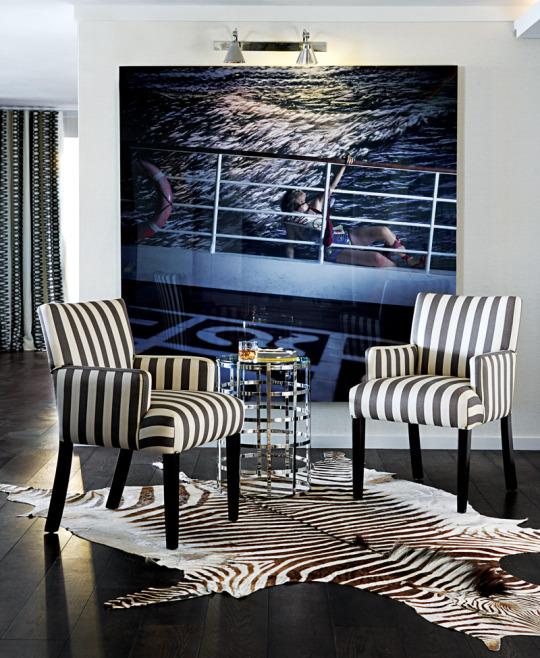
What Do We Mean by African Color and Vibrancy?
The African design is assertive, derived from the reds of nature, the yellows, the greens, and the deep blues.
1. It is graphic, tribal, and incorporates geometric prints, Adinkra symbols, and Maasai beadwork.
2. The cultural pride comes out in the form of handwoven textiles, mudcloth fabric, and Kente cloth patterns.
3. As opposed to minimalist designs where simplicity is lauded, African-inspired interiors are joyful and like to flaunt some contrast with ample amounts of stories to tell, making spaces lively to the eye as well as to the soul.
Choosing the Right Way to Integrate the Vibrancy in Your Designs
The following aspects will help you integrate the color and vibrancy in your designs-
a. Choose a Bold Color Palette
Designers recommend the application of warm colors to elicit the spirit of Africa in your designs. Terracotta shades give depth and authenticity, thus giving it a natural and culturally diverse backdrop. Strive toward an ultimate design that cannot just be stylish but also be considered as an environmentally friendly design on the one hand, and an impactful design with consideration of sustainable details on the other hand.
b. Authentic Textiles and Patterns
Mudcloth is a Malian textile handwoven on cotton with a symbolic design, and Ghanaian Kente cloth has stripes of different colors made with lively silk. The Shweshwe fabric of South Africa is fashionable with sophisticated indigo prints. These fabrics blend wonderfully into upholstery, curtains, throw pillows, or even hung as one-of-a-kind wall art.
c. Handcrafted Decor Will Be Helpful
Add African style and exotic wooden masks, and sculptures, missing any guilt. Use traditional fiber beadwork, e.g., Zulu bead bowls or colorful Tanganyika Tinga Tinga art. Other cultural pieces that can help to decorate any place with a genuine visual appeal are pottery, such as Moroccan tagines and Ethiopian coffee sets. Look for interior decorators in South Africa with years of experience for the best results.
d. Natural Textures Are Helpful
Wicker and rattan furniture displays a rustic feel in any place. Animal patterns, such as zebra or leopard, only work on a small scale as an accent piece to provide some visual interest. Raw wood and unpolished stone add a rustic touch to the interior, bringing authenticity and a natural, down-to-earth, and artistic atmosphere into the whole composition.
Benefits You Can Have
1. The color patterns and boldness you will have here are difficult to find elsewhere.
2. In most cases, experts use only natural items.
3. Enough open spaces, along with natural light, will be there.
4. Choose some of the effective indoor plants for your home.
As you are familiar with the benefits and usage, this is time for you to call an expert and start designing your interiors.
0 notes
Text
Fusion Styles Combining Global and Local Influences in Kids’ Fashion
In today’s interconnected world, fashion knows no boundaries. This cultural amalgamation has paved the way for “fusion styles” that seamlessly blend global trends with local heritage, resulting in unique and vibrant kids’ fashion. These styles celebrate diversity, honor traditions, and offer fresh, exciting designs for young wardrobes. Let’s dive into the fascinating world of fusion fashion for children and explore why it’s capturing the hearts of parents and designers alike.

Why Fusion Styles Are Trending in Kids’ Fashion
The growing appeal of fusion styles lies in their ability to:

Celebrate Diversity: Parents want their children to appreciate and embrace various cultures from an early age. Fusion fashion offers a creative way to introduce multiculturalism.
Add a Unique Flair: Mixing global and local elements creates distinctive outfits that stand out in a sea of mass-produced clothing.
Reflect Identity: For families with multicultural backgrounds, fusion styles allow kids to connect with both sides of their heritage.
Promote Sustainability: Many fusion brands source local materials and collaborate with artisans, promoting sustainable practices.
Popular Elements in Fusion Kids’ Fashion
1. Traditional Textiles with Modern Silhouettes
One of the most popular aspects of fusion fashion is the use of traditional fabrics such as:

African Ankara Prints transformed into trendy jumpsuits or dungarees.
Indian Ikat or Bandhani fabrics crafted into playful rompers and dresses.
Japanese Shibori dye techniques integrated into contemporary t-shirts and skirts.
These fabrics breathe new life into global textiles while catering to the comfort and functionality needs of kids.
2. Global-Inspired Embellishments
Intricate embroidery techniques like Mexican Otomi patterns on jackets and hoodies.
Mirror work and Zari embroidery from South Asia adorning casual wear.
Scandinavian minimalist aesthetics paired with bold ethnic accents.
3. Fusion Festival Wear
Children’s festival clothing now incorporates:
Traditional silhouettes like lehenga skirts paired with graphic tees.
African-inspired dashiki prints in western-style gowns.
Layered kimonos styled over shorts and tank tops.
4. Accessories with a Twist
Accessories play a big role in fusion fashion, including:
Handcrafted moccasins paired with jeans.
Beaded Maasai necklaces styled with boho dresses.
Embroidered backpacks or caps featuring motifs from various cultures.
How Designers Are Innovating Fusion Fashion for Kids
Collaborations with Artisans
Many brands are partnering with artisans worldwide to incorporate traditional craftsmanship. For example:
Bolivian weavers creating unique ponchos for kids.
Indian block printers designing patterns for western-style shirts.
Sustainably Sourced Materials
Fusion kids’ fashion often uses eco-friendly materials like organic cotton, bamboo, and recycled fabrics, ensuring that these stylish outfits are also kind to the planet.
Customizable Options
Some brands allow customization, enabling parents to mix and match global prints with local cuts to create truly one-of-a-kind outfits for their children.
Tips for Styling Fusion Fashion for Kids
Layer Creatively: Combine a traditional vest with a modern tee or denim jacket.
Focus on Comfort: Choose soft, breathable fabrics that allow kids to move freely.
Mix Patterns Thoughtfully: Pair bold ethnic prints with neutral basics to create balance.
Accessorize with Subtlety: Add cultural elements through shoes, hats, or jewelry without overwhelming the look.
The Future of Fusion Kids’ Fashion
As global connectivity continues to grow, so will the demand for fusion fashion. Upcoming trends include:

Tech-Integrated Traditional Wear: LED lights or smart fabrics combined with heritage designs.
Gender-Inclusive Fusion Styles: Breaking stereotypes by merging versatile designs with cultural motifs.
Virtual Try-Ons: Using augmented reality to help parents visualize how fusion styles look on their kids.
Final Thoughts
Fusion styles in kids’ fashion are more than just a trend; they are a celebration of culture, creativity, and inclusivity. By blending the beauty of global influences with local heritage, these designs encourage children to appreciate diversity while looking stylish and feeling comfortable. Whether it’s for everyday wear, festive occasions, or special events, fusion fashion offers endless possibilities for parents looking to dress their little ones in something unique and meaningful.
As parents and designers continue to embrace this vibrant trend, one thing is clear: fusion kids’ fashion is here to stay, setting the stage for a colorful, culturally rich future in the world of children’s wear.
momatos.in
#Kids' fusion fashion#Global and local style blend#Traditional textiles for kids#Multicultural kids' clothing#Fusion festival wear for children#Sustainable kids' fashion#Modern ethnic kids' wear#Cultural heritage in fashion#Unique kids' outfits#Global-inspired kids' fashion trends
0 notes
Text
https://www.wakuda.co.uk/
Discover the Beauty of African Handmade Gifts

African handmade gifts are more than just items; they are a testament to the rich cultural heritage and craftsmanship of the African continent. These unique pieces often carry stories of tradition, skill, and creativity passed down through generations. Whether you are looking for a meaningful gift or a beautiful addition to your home, African handmade gifts offer a diverse range of options that reflect the vibrant cultures of Africa.
Why Choose African Handmade Gifts?
Unique and Authentic
Each African handmade gift is a unique piece of art, crafted with care and precision. From intricately woven baskets to hand-carved wooden sculptures, these items are made by skilled artisans who infuse their creations with cultural significance and personal touch. Owning an African handmade gift means possessing something truly one-of-a-kind.
Support Local Artisans
Purchasing African handmade gifts directly supports local artisans and their communities. Many of these craftsmen rely on their skills as a primary source of income. By buying their products, you contribute to the sustainability of their livelihoods and help preserve traditional crafts that might otherwise be lost.
Sustainable and Eco-Friendly
African handmade gifts are often made from natural and sustainable materials, such as wood, clay, beads, and textiles. These materials are sourced responsibly, ensuring minimal impact on the environment. Additionally, the handmade nature of these products means less reliance on mass production and industrial processes, making them an eco-friendly choice.
Cultural Connection
African handmade gifts offer a tangible connection to the diverse cultures and traditions of the continent. Each item reflects the artistic expressions and heritage of its creator. Whether it's a piece of jewelry, a decorative mask, or a textile, these gifts provide a window into the rich tapestry of African life.
Types of African Handmade Gifts
Jewelry
African handmade jewelry is renowned for its beauty and diversity. From beaded necklaces and bracelets to intricate metalwork and gemstones, African jewelry often incorporates traditional symbols and designs. These pieces make for stunning accessories and meaningful gifts.
Textiles and Clothing
African textiles, such as kente cloth, mudcloth, and batik, are celebrated for their vibrant colors and patterns. Handwoven and hand-dyed, these fabrics can be used to create clothing, home decor items, or accessories. Wearing or displaying these textiles is a way to celebrate African artistry and culture.
Home Decor
African handmade home decor items include everything from hand-carved wooden sculptures and masks to woven baskets and pottery. These pieces can add a touch of African elegance to any space, serving as conversation starters and adding cultural depth to your home.
Traditional Crafts
Many African regions are known for their distinctive traditional crafts, such as Zulu beadwork, Maasai jewelry, and Tuareg leatherwork. These crafts often have cultural and symbolic significance, making them valuable keepsakes and thoughtful gifts.
Where to Find African Handmade Gifts
Local Markets and Shops
If you have the opportunity, visiting local markets and shops in African communities is a wonderful way to find authentic handmade gifts. Engaging with the artisans and learning about their craft adds a personal dimension to your purchase.
Online Retailers
Many online retailers specialize in African handmade gifts, offering a wide selection of items from different regions. These platforms often provide detailed descriptions and background information about the artisans, ensuring that you make an informed and ethical purchase.
Cultural Festivals and Fairs
Cultural festivals and fairs celebrating African heritage often feature stalls and exhibitions showcasing handmade crafts. These events are great opportunities to explore a variety of gifts and meet the artisans behind the creations.
Conclusion
African handmade gifts are more than just beautiful objects; they are a celebration of culture, tradition, and craftsmanship. By choosing these unique pieces, you not only enrich your life with authentic art but also support the artisans who keep these traditions alive. Whether you're looking for a special gift or a meaningful addition to your home, African handmade gifts offer a world of possibilities.
Visit Here: https://www.wakuda.co.uk/
0 notes
Text
The Role of Jewellry in Cultural Traditions
Jewellry touches every culture for hundreds of years. More than just pretty, jewellry often means more. It shows status, money, faith, and important life events. We'll look at how different cultures use jewellry. We'll see why it's so important to them.
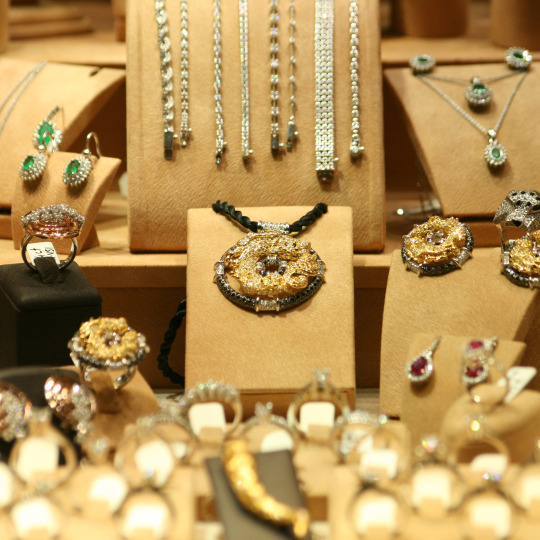
The Story of African Beadwork:
More Than Art: Beads are not merely for decoration across African societies. They hold significant meaning, expressing identity, standing, and dialogue. Take, for example, the Maasai community from Kenya and Tanzania. They cleverly use vibrant beads to represent various social aspects. What the beads look like and what shades they are can hint at if someone is married, how old they are, and where they stand socially in the tribe.
Indian Bridal Jewellry: Not Just Pretty, But Meaningful:
Indian bridal jewellry is more than just decoration. It's part of the wedding and stands for good fortune, charm, and safety. Every item is important, from the maang tikka on the bride's forehead to the payal on her feet. The mangal sutra necklace is another crucial piece. The groom ties it during the ceremony. It shows that the bride is married and is thought to keep the marriage safe from harm.
Jade Pieces from China: A Snapshot of Goodness and Righteousness:
Loved for millennia in China, jade is a symbol of pure beauty, elegance, and solid morals. Jade ornaments like bracelets and charms are popular gifts, representing well-wishes and safety. It's also thought to keep harm far and bring equilibrium and unity to the life of the one wearing it.
Heirloom Jewells in Europe: Linking Past and Present:
In various European societies, jewells frequently find their way from one generation to the next, preserved as family treasures. These items hold value not just from their skillful crafting and high-quality materials, but also from the family tales and remembrances they enshrine. Wearing these heirloom jewells during notable events pays homage to forebears while affirming the family's ongoing bond and lineage.
Gold in the Middle East: A Sign of Wealth and Standing:
Gold trinkets in Middle Eastern traditions are a vivid sign of luxury and social standing. They are commonly part of wedding dowries, signifying the family's affluence. The detailed patterns on Middle Eastern gold trinkets mirror the vibrant cultural legacy and artistic customs of the area. Gold trinkets are also viewed as a safe asset and a type of financial safety.
The Art of Kintsugi: Honoring the Broken:
Kintsugi emerges from Japan. It's a method that mends shattered pottery using a blend of lacquer and precious metal dust such as gold, silver, or platinum. The same technique also applies to jewellry. This process underscores the appeal of flaws and champions repair over disposal. As a symbol, Kintsugi jewellry communicates grit, evolution, and the charm of faultiness. It mirrors the Japanese mindset of wabi-sabi.
Shell Accessories of Pacific Islanders: A Link to Earth and Heritage:
Shell adornments in plenty of Pacific Island societies signify a profound bond with nature and lineage. These shells are transformed into various items such as necklaces, earpieces, and ornamental headwear, representing the crucial role the sea plays in their existence. Often, these articles act like protective charms, creating a spiritual connection between the wearer, their forefathers, and the environment.
Conclusion:
Jewellry holds a special spot in many cultures, standing for more things than just aesthetics. From the detailed African bead designs, and India's meaningful wedding gems, to the sacred turquoise of Native Americans, each piece carries a tale of culture, lineage, and principles. Recognizing what jewellry means culturally lets us see its actual worth and the deep customs it showcases.
0 notes
Text
Indigenous Jewellery: Celebrating Culture and Craftsmanship
Indigenous jewellery is not just an accessory; it is a vibrant expression of culture, history, and identity. Created by Indigenous peoples around the world, these pieces are rich with symbolism and tradition, reflecting the deep connections between artisans and their heritage. In this blog, we will explore the significance of Indigenous jewellery, its unique craftsmanship, and the importance of supporting Indigenous artisans.

The Cultural Significance of Indigenous Jewellery
Indigenous jewellery serves as a powerful medium for storytelling and cultural expression. Each piece is often imbued with meanings that go beyond its aesthetic appeal. Symbols, materials, and designs used in the jewellery can represent various aspects of life, such as spiritual beliefs, social status, and historical events.
For example, in many Native American cultures, turquoise is a cherished stone believed to bring protection and good fortune. In Australia, Aboriginal jewellery often incorporates natural elements like seeds, shells, and feathers, each telling stories of the land and the people. Maori bone carvings from New Zealand are renowned for their intricate designs that carry deep spiritual significance, such as the hei matau (fish hook), symbolizing prosperity and safe travel.
The Craftsmanship Behind Indigenous Jewellery
The creation of Indigenous jewellery is a meticulous process that involves traditional techniques passed down through generations. These artisans use locally sourced materials like metals, stones, beads, and organic elements, which are carefully crafted into unique pieces.
The skills required to create Indigenous jewellery are often learned through apprenticeships within the community. This hands-on training ensures that traditional methods are preserved and respected. Techniques such as beadwork, weaving, carving, and metalworking showcase the artisans' expertise and their intimate knowledge of their materials.
For instance, the intricate beadwork of the Maasai people of East Africa is known for its vibrant colors and patterns, which signify various aspects of their culture. In the Arctic regions, Inuit artisans create beautiful pieces using materials like walrus ivory and caribou antler, reflecting their deep connection to the natural world.
Supporting Indigenous Artisans
Purchasing Indigenous jewellery is more than just acquiring a beautiful piece; it is a way to support and sustain Indigenous cultures and economies. By buying directly from Indigenous artisans or through fair-trade organizations, you contribute to the preservation of traditional craftsmanship and provide economic opportunities for Indigenous communities.
However, it is crucial to ensure that the jewellery is authentically Indigenous and ethically sourced. Many mass-produced imitations flood the market, often exploiting Indigenous designs without proper credit or compensation. Supporting reputable sources helps to combat cultural appropriation and ensures that the benefits go directly to the artisans.

Conclusion
Indigenous jewellery is a celebration of culture, identity, and artistry. Each piece tells a story, crafted with skill and deep cultural significance. By choosing to support Indigenous artisans, we not only adorn ourselves with beautiful, meaningful pieces but also honor and preserve the rich heritage they represent. As we wear these pieces, we carry with us the stories and traditions of the people who crafted them, fostering a deeper appreciation and respect for Indigenous cultures worldwide.
0 notes
Text
The Timeless Elegance of Women's Anklets
In the reign of timeless accessories, anklets have emerged as a symbol of grace, femininity, and style. In this blog, we'll go through the world of women's anklets, exploring their rich history, diverse styles, and tips for choosing the perfect one for you.
A Walk through Time:
The origin of anklets can be traced back to ancient times when they were worn by women in various cultures. In ancient Egypt, anklets were considered a symbol of social status and were often adorned with intricate charms. In South Asia, anklets, known as "payal" or "pajeb," have been a part of traditional attire for centuries. In some cultures, anklets served as symbols of wealth and status, while in others, they held spiritual significance. Over time, anklets have become a global fashion statement.
Global Glimmer:
Today, anklets continue to be a cherished part of traditional attire around the world. The Maasai of Kenya adorn their ankles with vibrant beaded anklets, each color and pattern carrying specific meaning. In India, payal, the melodious anklets worn by brides and dancers, add a rhythmic tinkle to their steps.
Styling Your Story:
Women's anklets come in a countless of styles, catering to diverse tastes and preferences. Here are some popular styles that have captivated fashion enthusiasts:
Chain Anklets: Simple and elegant, chain anklets are a classic choice. They can be crafted from various materials like gold, silver, or stainless steel, making them versatile for both casual and formal occasions.
Festival Fun: Adding a bohemian touch to any outfit, get playful with statement anklets featuring feathers, or vibrant beads at your next festival. They are perfect for summer days or beach outings, exuding a laid-back and carefree vibe.
Anklets with Charms: Personalized anklets featuring charms hold sentimental value for many. From initials and birthstones to symbolic charms, these anklets allow women to express their individuality.
Anklets with Gemstones: For those who love a touch of glamour, anklets adorned with gemstones add a sparkling dimension to any ensemble. Whether it's a single gem or a combination, these anklets are perfect for evening events.
Toe-Ring Anklets: A fusion of toe rings and anklets, this style adds an unconventional and trendy element to your accessory collection.
Beach Bliss: Let your anklet chime with the ocean breeze by pairing it with sandals or barefoot steps on the sand.
Anklets are more than just adornments; they are whispers of faraway lands, symbols of tradition, and expressions of personal style. So, embrace the clinking charm of an anklet and let it tell your story, one beautiful step at a time.
Whether chosen for their aesthetic appeal, sentimental value, or cultural significance, anklets continue to grace the ankles of women, adding a touch of allure and personality to their overall style.
For more, you can visit: https://rawshans.com/
1 note
·
View note
Link
0 notes
Text
Beads with a Purpose: The Impact of Shopping SAWA SAWA Ornaments
Shop Ornaments From the dawn of time, the Maasai and Samburu tribes have been masterful artisans, creating stunning beads from natural materials like wood, gems, rocks, bones, and more. These beads hold significant cultural importance, with each color and pattern carrying a unique message. Today, these tribes continue their ancient traditions, even as the world around them changes. The…

View On WordPress
0 notes
Photo
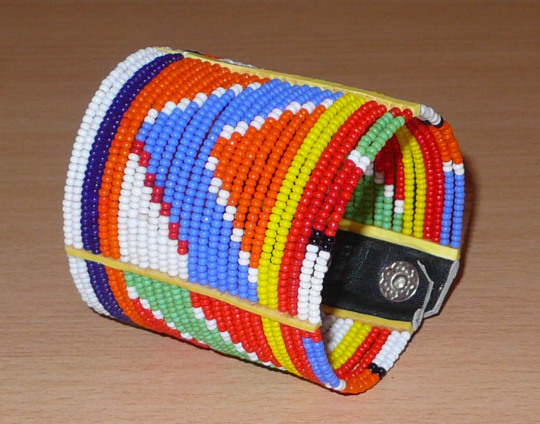
Bracelet africain Massai ::: Timeless Fineries
https://www.timeless-fineries.com/collections/bracelets-africains-massai
timelessfineries.etsy.com
#bijou africain#bracelet massai#bijou ethnique#timeless fineries#afro chic#mode africaine#bracelet africain#bijou tribal massai#bracelet traditionnel#motifs tribaux#african bracelet#maasai jewelry#tribal jewel#ethnic cuff#african jewellery#traditional beadwork#exotic jewel#african fashion#maasai cuff#tribal patterns#high cuff#pearl bracelet#multicolor seed beads
13 notes
·
View notes
Text
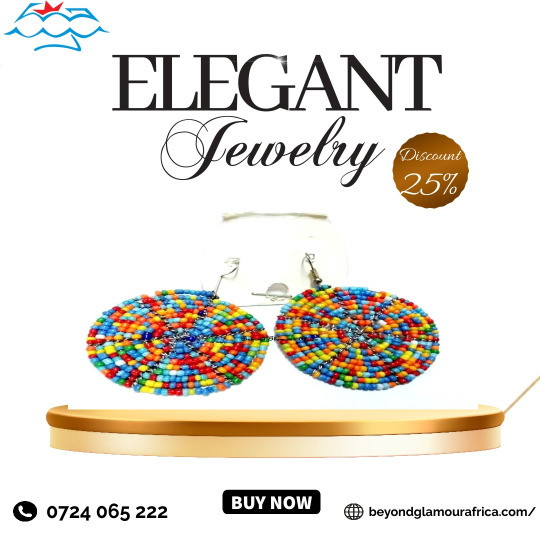
Eye-catching multicolor beaded Maasai earrings that showcase vibrant patterns and cultural elegance
call or text 0735380072/0724065222
#stylish#african#ankara#trendy#fashion#custom#gift, #fathersday ,#beyondglamourafrica,#xmas,#scarf,#poncho,#shawl,#maasai,#shuka,#hoods
1 note
·
View note
Photo

You know you like bead work.
0 notes
Text
Indigenous African Beadwork Distinctions
I love looking at African beaded jewelry through the lens of what makes it culturally distinct as someone living in the diaspora- which is relevant bc when you look up ‘beaded jewelry’ you get NA Indigenous designs and white people’s interpretation of said designs, mostly. The prior isn’t a gripe, since I’m currently living on/in Turtle Island and that’s the Indigenous culture here. As someone with African heritage though and as a bead artist, the differences are of course really important. Pattern and symbol have cultural meanings and we always have to know what we are doing and what we aren’t doing; and as someone in the African diaspora specifically through enslavement there’s some nuance as far as what I will do and what I won’t, what I have ties to and what I still do slightly differently out of respect and because I am also free from certain constraints.
On the one hand, African beadwork is distinguished from TI beadwork by pattern (though certain patterns like the rainbow, which is pretty much universally a Big Deal and which features heavily in various African Indigenous cultures, still show up) and thus color. There’s also the fact that only *some* of African beadwork is done with small beads and plenty of it actually relies on large / pony beads moreso than I usually see with NA Indigenous beadwork. Like Ifa eleke need large beads-

And otherwise there are lots of similarities because Indigenous People Doing Stuff With Beads often follows a similar logic wherever there are beads. So we also:

Though a lot of times we go CHONKY w it:

And of course

But one of the things I think is really distinct and I love a lot since I’ve been working with this material since I was a kid, is the addition of wire as a beading element leading to the concept of African beading including lots of collars and earrings with structures owing themselves to the addition of wire (especially in Maasai collars). Like:





And I’m curious as to when it became a cultural staple or what would have been used before wire, bc I know there are other things like horse hair for instance that can to a point provide the firm, springy form achieved here.
Another thing that definitely stands out is the breast piece collars & capes

especially Zulu beadwork-



Of course there’s always:


On a whole nother level.
Before I go, this post features primarily Maasai and Zulu beadwork, here is some Xhosa all of which is incredibly fleeky bc Xhosa color combos are icy af but looking at the collars always reminds me how many of the old pieces are still in museums


Of course my whole point here is exemplified by the fact that when I looked up ‘ndebele stitch’ to give an example for the end of this post, I find this:

And it’s like... you know I’ll give that techniques can travel and spawn bc they’re a result of action and geometry and eventually ppl in other places will derive similar approaches and actions through shared human consciousness. I’m not mad that a 2 bead pattern is being done by someone else...but you....literally called it the Ndebele pattern...on your little animal print bracelet...smh.
ANYWAY! That’s been a rant on African beads I guess!
#what's irksome about that last thing is like#there's LOTS of european beadwork!#it's gorgeous!#DO YOUR OWN SHIT PLS#indigenous#yoruba#ifa#xhosa#ndebele#zulu
5K notes
·
View notes
Text
20 Cultures & Nations That Continue to Wear Traditional Clothing Everyday
The world has drastically evolved in many different ways during the past 100 years.
Previously, for a number of reasons, each nation, each region, and almost every town or tribe wore its own distinctive traditional attire. Some were made due to the weather, some for the class, and some because those were the only colors and materials available.
Today, only a small percentage of communities worldwide continue to dress traditionally on a daily basis.
Pakistan

Sari and the shalwar kameez, two types of traditional dress, are worn in Pakistan.
The shalwar kameez is more popular throughout the nation, even among Punjabis.
Saris are typically worn by Muslim and Hindu devotees, and are more frequent in cities than anywhere else. These traditional outfits are made of cotton and are loosely draped around the body, keeping the wearer warm in the winter and cool in the summer.
Indonesia
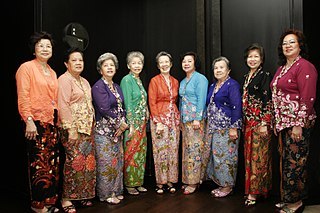
Indonesia is a group of islands with many varied civilizations, each of which has its own traditional and "westernized" clothing.
Let's focus on the kebaya. Today, Malaysia, Singapore, Brunei, Myanmar, some regions of Thailand, Cambodia, and the Philippines all wear the kebaya.
It's almost always floral and typically paired with a silk, cotton, or polyester sarong. It’s the traditional dress of Indonesia but is predominantly worn by the Javanese, Balinese, and Sundanese.
The kebaya blouse, the brooch (since the original and traditional kebaya has no buttons), and the sarong or skirt make up the traditional clothing ensemble that is typically worn. Many different styles are used today to make it modern, and it's common to see among the people
Maasai of Kenya
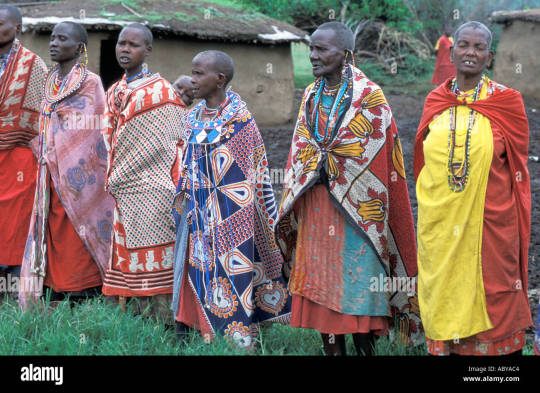
They still wear clothing with a variety of colors and patterns nowadays. Both men and women wear flowery patterns. The most prevalent traditional clothing costume is a kanga, a one piece worn over the body.
It's also customary to wear beaded jewelry, and each hue has a unique meaning. For instance, the colors white and red denote peace and bravery, respectively.
The beads were made out of a variety of materials before European contact, including clay, seeds, bone, etc.
The majority of beads created today are composed of glass. Head shaving is also a right of passage for both genders. The Maasai's traditional clothing seems to be enduring despite their use of contemporary materials.
Sami of Sapmi

The Sami people are found in northern Russia, Sweden, Finland, and Norway. You may have seen Kristof in Frozen wearing all black, but Sami's traditional attire is the complete opposite!
They dress in vibrant hues, elaborate designs, and a variety of styles. It is known as a gakti and is worn during ceremonies, work, and reindeer herding.
Nowadays, the gakti is typically made of cotton, wool, or silk instead of the reindeer leather used in traditional versions.
Wearing certain colors, patterns, or jewelry might reveal a person's origins, marital status, and even the identity of their family.
Bhutan
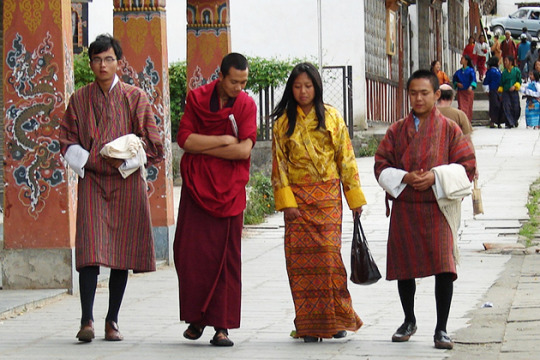
Both men and women still dress traditionally in the little nation to China's south.
A gho is the term used for guys. Women refer to it as kira. The men's attire consists of a knee-length robe with a waist tie. A kabney, a silk scarf that hangs from the left shoulder down to the right hip, may be worn occasionally (like at celebrations).
In fact, if a man works for the government or a school in Bhutan, he must wear the traditional garb, called gho.
The female kira is an ankle-length dress that is typically tied at the waist and clipped with brooches at the shoulders.
Vietnam

Although the ao dai may not be as popular as it once was, it does seem to be making a comeback.
Although it is gender neutral, today most women wear it.
This is the attire you will find in settings where uniforms are common (e.g., schools, banks, restaurants, flight attendants, etc.). Typically, when we think of traditional attire, we picture conservative looks that cover everything.
The ao dai does cover everything, but if you want it to be more promiscuous, you may make the cloth as thin and translucent as you like. Additionally, it can be tailored to fit tightly and form-fittingly to highlight the body's inherent curves.
Japan
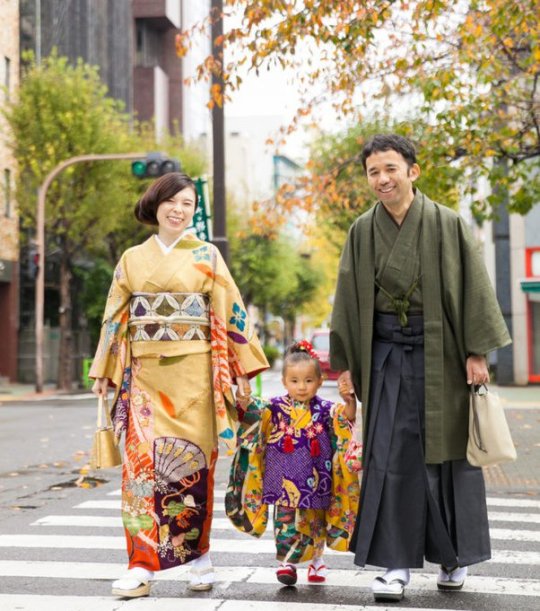
We've all heard of the kimono, which in Japanese literally translates to "thing to wear," but did you realize there are other types of it?
The kimono is available for both men and women.
The most complicated ones have 12 separate parts, including the women's. There are several obi styles and ways to tie them for formal and casual situations in addition to various kimono styles for various occasions.
The kimono for males is more simple, typically consisting of 5 pieces. Today, they are typically darker in tone (blues, blacks, and greens), however occasionally brighter hues are used for more laid-back occasions.
Conclusion
Just as in the summer and spring, dresses are appropriate in the fall. We've gathered some of our favorite cute Best Fall Dresses for Women to assist you figure out how to look put-together in a dress while the temperature outside is 40 degrees.
To read more:
Difference Between Casual and Formal wear
Meta title - Traditional wear around the world 2022[updated] - RAzidonz store.
Meta Description -Culture refers to aspects of human-made elements, including tools, dress, and media, in addition to values, attitudes, and norms.
Web URl - https://razidonz.store/cultural-wear-traditional-clothing/
Focus KWs - Traditional Clothing
Related Kws - traditional dress
culturally-specific clothing
Cultural dress
National clothing sense
Clothing to wear
#traditional dress#culturally-specific clothing#Cultural dress#National clothing sense#Clothing to wear
3 notes
·
View notes